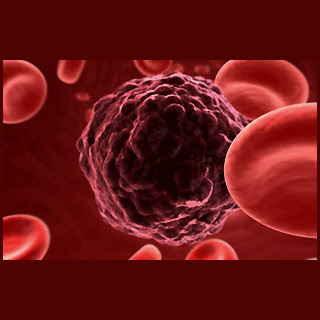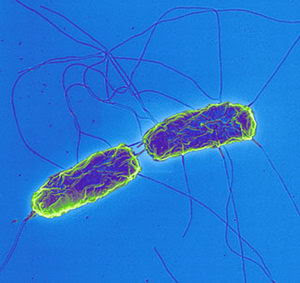Aug 7, 2010
DNA As Genetic materials
Genetic materials are the substance which can controls the inheritance of trails from one generation to the next and are also able to express its effect through the formation and functioning of the trails. Replication and expression are the two basic characteristics of genetic materials. The genetic material consists of a number of genes.
Functions and requirements of Genetic material
- Genetic material must be able to replicate itself.
- The genetic material and its genes must contain the hereditary information in the coded form.
- The structural elements of the genetic materials must be ubiquitous in their distribution.
- It should be present in all the cells.
- There should be transformation of replicated genetic material from a cell to its daughter and from one generation to the next.
- It should be able to express itself through formation of specific biochemical.
- Different parts of an organism are able to have specific size, structure and functions due to the presence of intrinsic control system for different functioning of genetic material or its genes.
- The sorts of biological clock in the expression of genetic material govern developments of embryo, juvenile state, mature state, sexual maturation and ageing.
- There is an occasional, permanent and inheritable change in the structure and functioning of its genes. It is called mutation.
DNA as Genetic material
- The various evidence of DNA being genetic material are as follows:
- It occurs in all the cells and is capable of replication.
- DNA copies are precisely the same as the original DNA.
- It is able to control the cell structure and cell functions through transcription and translation.
- DNA replicates prior to cell division and is equitably distributed in the daughter cells.
Aug 1, 2010
Typhoid is known as enteric fever. It is an acute infection of the intestine. It is characterized by persistent fever, slow pulse, and abdominal tenderness. It is the most common in Kathmandu and other rural parts of the country. It is highly communicable disease. The people suffer from heavy loss of manpower.
Causative organism
This illness is caused by bacterium named Salmonella typhi. It is a rod shaped motile, gram-negative bacillus bacterium. It measures 1.0 to 1.5 μm in length. This bacterium affects human intestine.
Mode of infection
Typhoid is transmitted through contaminated food and water. It is also spread by intestinal discharges. Any person carrying Salmonella typhi in his intestinal tract can also spread the disease to others even though the person himself may not be suffering from the disease. These are healthy carriers. Flies also play role in transmitting bacteria.
Incubation period
The incubation period is 2 weeks on an average.
Symptoms
It is characterized by following symptoms:
- Persistent high fever (104⁰F) that lasts for 2-3 weeks and then slowly declines onwards.
- Intestine shows lesions, hemorrhage and ulceration.
- Other symptoms are slow pulse, abdominal tenderness rose colored eruptions.
- Death may occur due to haemorrhage or puncturing of the intestine.
Classically, the course of untreated typhoid fever is divided into four individual stages, each lasting approximately 1 week.
First week:
In the first week, there is slowly rising temperature with relative Bradycardia, malaisc, headache and cough. Epitaxis is seen in a quarter of cases and abdominal pain is also possible. There is Leukopenia with Eosinypenia and relative Lymphocytosis, a positive diazo reaction and blood cultures are positive for Salmonella typhi or paratyphi. The classic widal test is negative in the first week.

Second week:
In the second week of the infection, the patient lies prostrated with high fever in plateau around 40⁰C and bradycardia (Sphygmo-thermic dissociation), classically with a dicrotic pulse wave. Delirium is frequent, frequently calm, but sometimes agitated. This delirium gives to typhoid the nickname of “nervous fever”. Rose spots appear on the lowest chest and abdomen in around 1/3 patients. There are rhonchi in lung bases. The abdomen is distended and painful in the right lower quardant where sound can be heard. Diarrhea can occur in this stage: six to eight in a day, green with a characteristic smell, comparable to pea-soup. However, constipation is also frequent. The spleen and liver are enlarged (hepatosplenomegaly) and tender and there is elevant of licer transa minases. The Widal reaction is strongly positive with antiO and antiH antibobies. Blood cultures are sometimes still positive at this stage.
Third week:
In the third week of typhoid fever a number of complications can occur:
• Intestinal hemorrhage due to bleeding in congested peyer patches; this can be very serious but is usually non-fatal.
• Intestinal perforation in distal ileum: this is a very serious complication and is frequently fatal. It may occur without alarming symptoms until septicaemia or diffuse peritonitis sets in.
The fever is still very high and oscillates very little over 24 hours. Dehydration ensues and the patient is delirious (typhoid state). By the end of third week defervescence commences that prolongs itself in the fourth week.
Control
Antibiotics effective in enteric fever are:
- Chloromycetin-drug of choice
- Cotrimoxazole
- Amoxycillin
- Chloramphenicol
Preventive measures
i. Proper sanitation (Health education)
ii. Personnel cleanliness
iii. Sanitary disposal of human excreta
iv. Protection and purification of water
v. Immunization against typhoid (TAB) vaccine.
Some famous person who suffered this disease
•William Wallace Lincoln, third son of President Abraham Lincoln and Mary Todd Lincoln
• President John Adams’s wife Abigail Adams
• Alexander the Great (Typhoid is one of many possibilities of his cause of death)
Subscribe to:
Comments (Atom)



